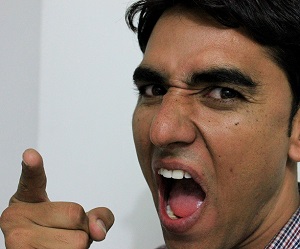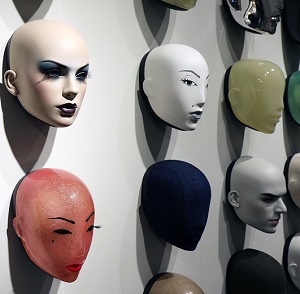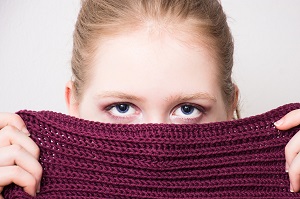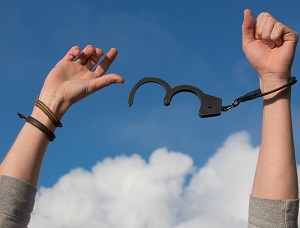How to Discover Your Authentic Self
A therapist once told me to be more authentic. I left that session baffled; I was clueless about who I was. In my 20s, I’d been given the diagnosis officially reserved for people who have no idea who they are: Borderline Personality Disorder.
People trot out the advice: “Just be yourself”. That’s all very well if you’re on speaking terms with ‘you’. But “no stable sense of self” is part of the criteria for BPD.
I’d also suffered from alcoholism, bulimia, and other self-harming disorders. So I was seriously worried that my authentic self might turn out to be a maniac hell-bent on chaos and self-destruction. Or worse, it might just want to eat cake all day.

Understanding Authenticity
When I got home from therapy, I Googled: “Who am I?”, “How can I be myself?”, and “How do I find out who I am?”. But the self-help articles were confusing. And for weeks afterwards I was bombarded with ads for new age music, genealogy websites, and yet more therapy.
Ultimately, I found it helpful to define what authenticity is not before I could understand what it is. This article aims to clear away the confusion, so you can undertake the journey to authenticity too.
Please don’t worry that your authentic self might want to do unhealthy things like lying on the sofa all day downing gin. Self-destructive behaviours and many mental health issues are a sign that you have been cut off from your authentic self. The authentic ‘you’ won’t wish to self-harm.
Authenticity and Self-Expression

Authentic people are sometimes presented as always expressing their true feelings and opinions. As someone who wasn’t assertive, I thought it might help if I became a bit angrier. You know, like those Facebook folk who post their thoughts aggressively and challenge offended people to ‘unfriend’ them?
But that’s not authenticity; it’s hostility. Knowing when to hold back is intelligent and compassionate. Politeness, respect, and kindness are part of an authentic existence just as much as anger, setting boundaries, and assertiveness.
People who put on ostentatious displays are usually trying to hide their insecurities. Aggressive self-expression is a form of self-defense. This is equally true of positive emotions; authentically happy people don’t bend your ear about how fab their lives are.
When you’re authentic, you neither overstate any part of yourself nor shove your feelings and opinions down others’ throats.
Authenticity and Individuality
Authenticity is sometimes defined as ‘being an individual’. This doesn’t mean dying your hair outlandish colors or adopting a French accent even though you’re from Birmingham.

Drawing attention to your external appearance can be a way of hiding who you are inside. Going out of your way to be ‘different’ is just as inauthentic as not being true to yourself. Authentic people neither make an excessive effort to stand out nor fit in.
If you are truly authentic you’ll be a great individual without trying; because that’s how you were made. Even identical twins have different fingerprints. We are all fundamentally unique.
Authenticity and Masks
The ways we falsify ourselves are numerous and the trickiest part is that often we’re unaware that we’re being fake. Our masks are so real to us that we take them to be true.
If it’s vital to you to be the ‘best’ at any behavior, whether it’s extreme niceness, utter arseholery, being everyone’s ‘rock’, or being the class clown, these are likely your personas. They may be masks you’ve designed to make people like you, scare them away, or prevent them from knowing the real you.
This doesn’t mean that you can’t be authentically kind, moody, dependable, or witty. But authentic behaviors are born of spontaneity, not a default pattern of behavior you revert to at inappropriate times.

Authentic people may have characteristic ways of being, but they are also flexible. They go with the flow and don’t define themselves by any one trait or dimension.
Authenticity and Intention
Authenticity is revealed not in behavior itself, but in the intention behind it. Look at why you feel the need to give a certain impression of yourself.
If your intention is to keep your job, a fake smile at work might sometimes be necessary. Not punching people who annoy you is civil and prevents you from getting arrested. But when you do anything to try to give off a certain impression of yourself because you’re afraid of being you, that’s inauthentic.
This fear is not associated with a real risk of danger, such as an attack by prejudiced people if you belong to a marginalized group. It’s a feeling that is related to who you essentially are.
What Causes Inauthenticity?
Inauthenticity is caused by an excessive preoccupation with the relationship between you and the world. This means you ‘act’ instead of simply being.

This state of mind shows up as insecurity, overthinking, self-consciousness, worrying what others think, self-sabotage, and fear of failure or success. On the flipside, it can also lead to misplaced anger, greed, selfishness, and hatred.
Inauthenticity is all driven by the faulty belief: “I’m not good enough as I am.” Not feeling good enough is entwined with a sense that it’s not safe to be you in the world.
These feelings usually come from childhood. You were taught–directly or indirectly–that it wasn’t safe or acceptable to be you just as you are. This may have been because your caregivers or peers ‘needed’ a particular version of you in the past.
Even if a mask was necessary back then to survive or protect yourself, you don’t need it now. As an adult, your masks and pretences are the ultimate barrier that prevent you from living freely and happily.
The Journey to Authenticity
So, who are you authentically? Ask yourself the following questions:
“Who would I be if I wasn’t afraid?” That’s who you authentically are.

“What would I do if I felt safe?” That’s your authentic behavior.
“Who would I be if I knew I was good enough?” You’d be your authentic self.
Equally, ask yourself what you would not be doing if you were more authentic; habitual people-pleasing or people-provocation are both born out of fear.
Authenticity is a journey. Most people don’t unlearn their faulty beliefs overnight, especially if they were formed as a way of surviving. So, keep asking the questions, hang out with people who make you feel safe, and face your fears. In time you’ll discover that you are perfectly good just as you are; so good that you don’t need to pretend to be anyone else.
https://www.wiseism.com/how-to-discover-your-authentic-self/https://www.wiseism.com/wp-content/uploads/Who-am-I.jpghttps://www.wiseism.com/wp-content/uploads/Who-am-I.jpgWise Livingauthentic self,authenticity,be yourself,how can i be myself,how do i find out how i am,how to be authentic,how to discover your authentic self,self discovery,who am iA therapist once told me to be more authentic. I left that session baffled; I was clueless about who I was. In my 20s, I’d been given the diagnosis officially reserved for people who have no idea who they are: Borderline Personality Disorder. People trot out the advice: “Just...The WiseistBeth Burgesswiseism1@gmail.comAdministratorMy name is Beth Burgess. I don't claim to be the wisest, but I am 'The Wiseist' - someone dedicated to collecting and sharing wisdom that can help people live their lives more happily and successfully. I'm also the bestselling author of "Instant Wisdom: 10 Easy Ways to Get Smart Fast",, a therapist, coach, freelance writer, speaker, trainer, and workshop leader. And I'm still learning too.Wiseism

Leave a Reply
You must be logged in to post a comment.